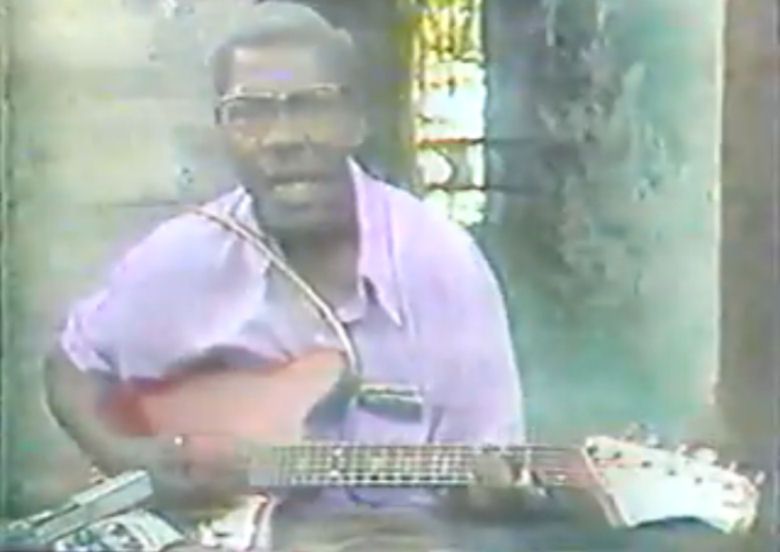
"Hello, I am a fan of African guitar music, and the video below is of one of the masters of the instrument in Africa, Albert Luampasi. Is it possible to you to identify the guitar that he is playing in this video at Youtube?Thank youHi Emerson, I really can't say what that guitar is. It looks 1960s Japanese to me, but could equally be a guitar of 1960s European origin given the pushbutton controls, whilst the headstock looks Silvertone/Danelecro.
Emerson"
The strings have a very un-metallic sound to them. I wonder what strings he is using here. I note he has a microphone in front of the guitar. Perhaps the guitar's pickup isn't even functioning or is itself microphonic.
Anyway, do any Guitarz readers have any clue as to the identity of this instrument?
G L Wilson
Guitarz - The Original Guitar Blog - now in its 9th year!

Didn't I once comment on this one?
ReplyDeleteIt really looks like a heavily abused Jolana model (horns and position of the rocker switches), with a musima neck (bold stripe position markers, shape of the headstock). Still, a lot of it seems off: no visible pickups (one bridge pickup? why the rocker switches then?), an unknown pickguard, those 12th fret round markers...
Let's try this again.
ReplyDeleteAlthough one of the first electric solidbody guitars to reach Kinshasa was remarkably a goldtop Gibson les Paul (really!), this is more likely a European build. It's battered, but this is what we can make up:
- Jolana body, judging by the shape and the pushbutton controls.
- Musima neck, judging by the headstock shape and block position markers (although the 12 mark are double dots!)
- the seeming absence of a pickup might indicate a single pickup very near to the bridge, like the french Jacobacci Ohio guitars - but then again a single pickup contradicts two push button controls.
It's truely a cobbled-together guitar, but most likely with cheap European parts (neck+body) and a single handmade bridge pickup. Lots of Congolese musicians knew there way around electronics. The microphone is for voice only.